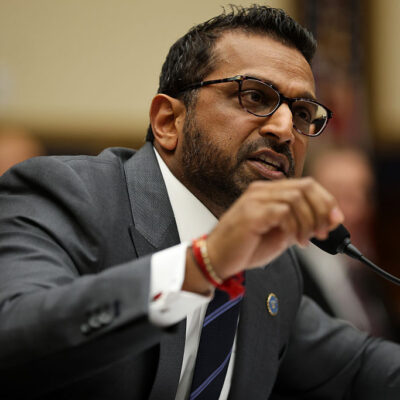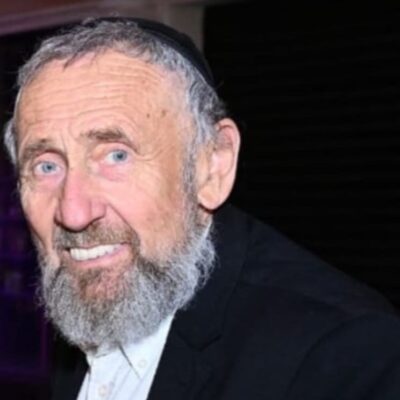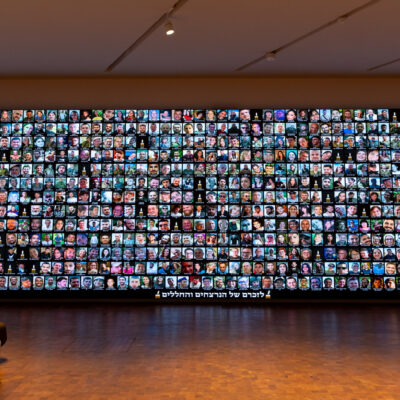The Jewish Confederation of North America: on Donors, Investors and Cynicism (a response to Misha Galperin)

By Andrew Rehfeld, Ph.D.
I thank Misha Galperin for his response to my article Who are Federation’s Customers?. Galperin reminds us that donors must be inspired to give and not treated as “taken-for-granted suppliers of funds.”
I agree with much of what Galperin has written. But I disagree with his cynicism. As our North American Jewish community faces significant challenges for which our communal institutions were not built, it may be time for more fundamental change of both structure and approach to what is really a confederated system.
Let’s start with our point of agreement: I agree that donors must be inspired, treated as investors, partners in our work and not “taken-for-granted.” Michael Oberlander, Chief Philanthropy Officer of the St. Louis Jewish Federation, has described the importance of building a strong relationship of trust that inspires our donors-as-investors. Galperin’s view is completely consistent with our approach. (He even concedes his very point of seeming disagreement when he suggests that perhaps our donors are not “customers” but “stakeholders” instead.)
So, where’s the disagreement?
Since I argued that donors are not customers, Galperin takes a cynical approach to our work. Citing incorrect data from our community he issues this challenge: “So, go ahead, keep treating your donors as taken-for-granted suppliers of funds to serve your “real” customers. See how it works out for you.”
Okay: here’s how its working in St. Louis.
From 1989 to 2014 the St. Louis Jewish Federation experienced what many Federations experienced – slow decline. We had lost about 60% of our donors during that period. Our campaign declined in real terms (controlling for inflation) 23 out of those 25 years. That means that in all but two years – 1996 and 1998 – the dollars we raised in each annual campaign were worth less than the year before.
In 2014 we instituted a new collaborative, “bottom-up,” community-focused, engagement approach based on the principles I articulated in my earlier article. I thought it would take five years to yield success.
I was wrong. It only took a year.
In 2015 St. Louis saw our first real growth in the annual campaign since 1998.
Then in 2016 we achieved the first back-to-back years of real growth since the 1980s.
And in 2017 we saw a third year of consecutive real growth, something we believe has not happened since the 1970s.
Our campaign closed in 2017 at $10.1 million, 10% higher than the $9.2 Galperin reported.
As for our donor base we have had our strongest donor growth in twenty years as well.
From 1989-2014 the St. Louis Federation lost roughly 60% of our donor base, with declines in every year except for two. Since 2015 we have had positive growth in our Gen X and Baby Boom donor segments (born between 1946 and 1981) for the first time in almost two decades. Because we have a much older donor base (as many Federations do), these growth areas have only begun to stabilize our continued losses due to aging.
When you had been losing over 3% of your donors every year, stabilization may be a sign of success. But Galperin is right: we must do better.
I think “doing better” begins with the Galperin/Oberlander approach to donors and promoting Federation’s mission to sustain a vibrant Jewish Public Sphere. But we must also recognize that our collective institutions were designed to address fundamentally different challenges than we are facing today.
The Federated system was designed to address the urgent-existential challenges of 20th Century Jewry. By contrast, 21st Century North American Jewry faces what we might call “slow-existential” challenges: increased secularization; delayed starts of family life; the complexity of Israel; low “willingness to pay” for Jewish engagement; and low levels of Jewish education, among others. These challenges are hard to see even if their effects will be existential. Because they are hard to see, there is greater disagreement about what solutions to pursue.
The core challenge is that we are actually a confederation of local communities not a truly federated system. That confederated structure may have successfully met the urgent-existential challenges of an earlier era because there was greater consensus about what to do. With the current lack of consensus, the structure impedes our ability to coordinate and implement solutions on a continental level, solutions that would strengthen our local communities and North American Jewry overall.
To be successful, we may have to think in fundamentally different ways. Jay Ruderman’s recent call for creating representative institutions through elected leadership is worth consideration. Other more fundamental structural changes that would allow greater collective action on a continental scale without giving up local strength should also be considered.
One thing that won’t work is a cynical approach with our old models in mind. Not for us or our communities. Not for our investors. Not for our customers.
And not for the Jewish People.
So let us heed Galperin and Oberlander’s advice. Let us build collaborative relationships with our donors-as-investors/stakeholders, sharing with them the joy and promise of our work. Let us build with them just and decent communities, steeped in education and social action, inspired by the beauty of our tradition, and a commitment to our moral obligations to one another and the communities in which we live.
This is, after all, is what Jewish Federations can do best: build the ecosystem of the Jewish Public Sphere in North America, to respond in new and dynamic ways to the slow-existential challenges of our 21st Century. A Jewish Public Sphere that meets the needs of the most vulnerable, and that helps individuals live lives with dignity, meaning and purpose, connected to the Jewish People and Israel as part of a life, well lived.
Andrew Rehfeld, Ph.D., has been President and CEO of the Jewish Federation of St. Louis since September, 2012. He is a faculty affiliate at the John C. Danforth Center on Religion and Politics at Washington University in St. Louis.

 Add EJP on Google
Add EJP on Google










